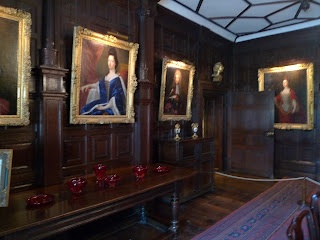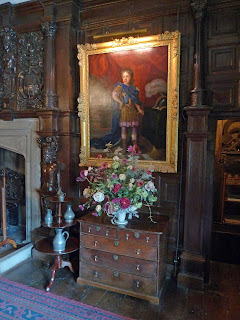Our time in the Lake District ended, this was a travel day
from Arnside to Edinburgh.
The plan was to catch the local train out of Arnside and
take the twenty minute train ride to Lancaster. From there we would take Virgin
Rairoad’s TransPennine Express, leaving every half hour, going directly to
Edinburgh’s Waverly Station. Total time, roughly three hours.
The start went off well, even considering the quarter mile
trudge from the Fighting Cocks to the Arndale train station, in the rain,
dragging our rolling duffels. The 9:30 train arrived spot on time, and we
headed down the tracks to Lancaster.
It was then that we learned that the tracks were closed
north of Carlisle for maintenance, this being a holiday and all. As an
alternative, Virgin Trains was providing buses, and a three hour bus ride from
Carlisle.
At Lancaster there
was more good news from the big red V. There was also a shut down between
Lancaster and Carlisle, so the Lancaster train would only go one stop, to
Oxenholme.
Here’s the itinerary after Lancaster:
Train from Lancaster to Oxenholme.
Queue for bus to Carlisle
Queue for taxi to Carlisle
Ride 4 people and driver in a four person taxi (do the math)
for 45 minutes to Carlisle
Queue for bus to Edinburgh.
Queue a little longer for bus to Edinburgh.
Take three hour bus ride on full bus to Edinburgh.
Say goodbye for the day to “Virgin Airlines TransPennine
Express Rail Service.”
Things got a whole lot better after that. A brief taxi ride
took us to the Scott House, or B&B for the next three nights. The Scott
House is a big, old, well appointed, Georgian row house in a nice and
convenient part of town. A four star B&B with a 5 star rating. We were met
by Jemima, the owner (not the same appearance nor size as “The Aunt”, she
noted), and shown to our rooms. The
rooms are both huge, and nicely furnished. We flipped, and Marty got the one
with the poster bed and seating area. I
found this place on TripAdvisor, they’re also on AirBnB. If you ever come to
Edinburgh, remember this one.
From the Scott House. It’s a 10 minute walk to the Royal
Mile, and 20 minutes to Edinburgh Castle.
We can also say, at the end of our first evening, the Scott
House is less than a block from a terrific pub, a good pub, a so-so pub, and The
Olive Branch, an outstanding little bistro.
I’ll relate a couple of conversations Marty and I had with
others during the day. First, on the 45 minute, close quarter cab ride, we
shared the cab with a Mother and her adult daughter, off for several days in
the Scottish Highlands. We all shared some of our travel experiences. During the discussion, we learned they were
from Manchester. The daughter is a teacher, and even noted that some of her
students were at the concert when the terrorist bombing occurred last week. I
noted how horrible that was for those students. She noted (and I swear this is
true) that “it’s really good to see how the city is pulling together.” Now, I
know I’m a crank, but I wanted to ask her, “pulling together?” To what end? Is
there any anger? Is there any resolve to prevent this from happening again?
Instead, I said, “I’m sure it is.”
The other conversation happened in the good pub I mentioned
above,
There was an elderly gentlemen sitting in a booth by
himself. He was wearing a hat that said “US Army”, had an American flag on it,
and several medals sewn on. He was probably a Korean War veteran, we didn’t
find out for sure. We did find out that he was from New Hampshire ( pretty
clear from his accent), that he was traveling with his wife, and he’d just
stepped out to the pub. Before we left we were both able to shake his hand and
thank him for his service. That opportunity made my Memorial Day a little more
special. I hope he felt the same.


















































